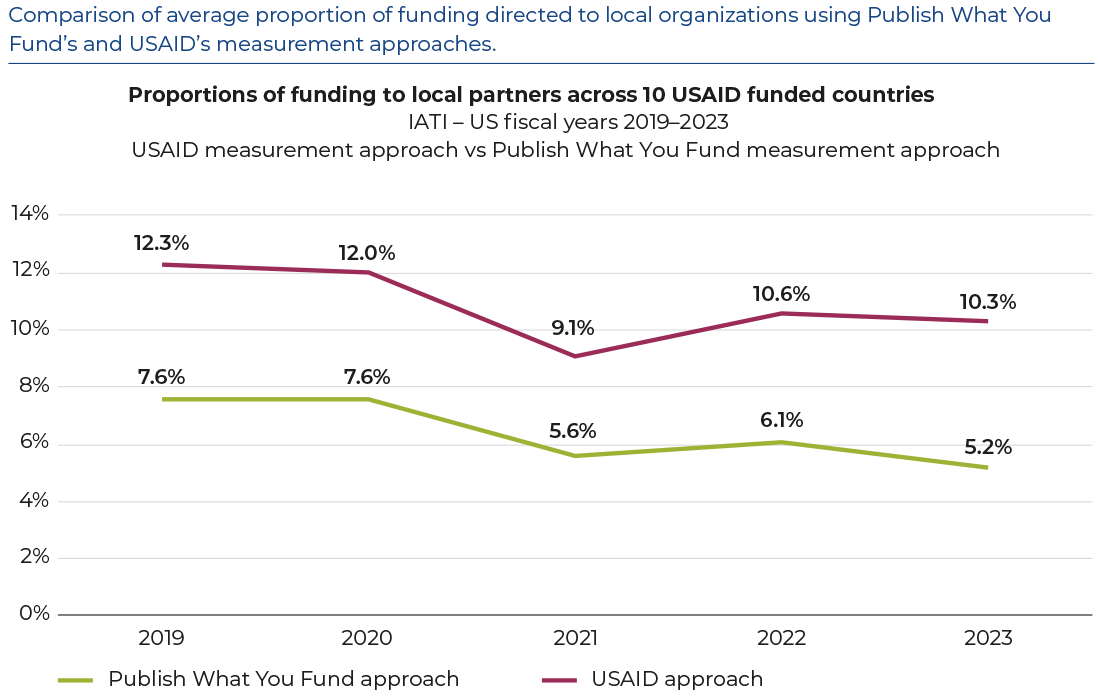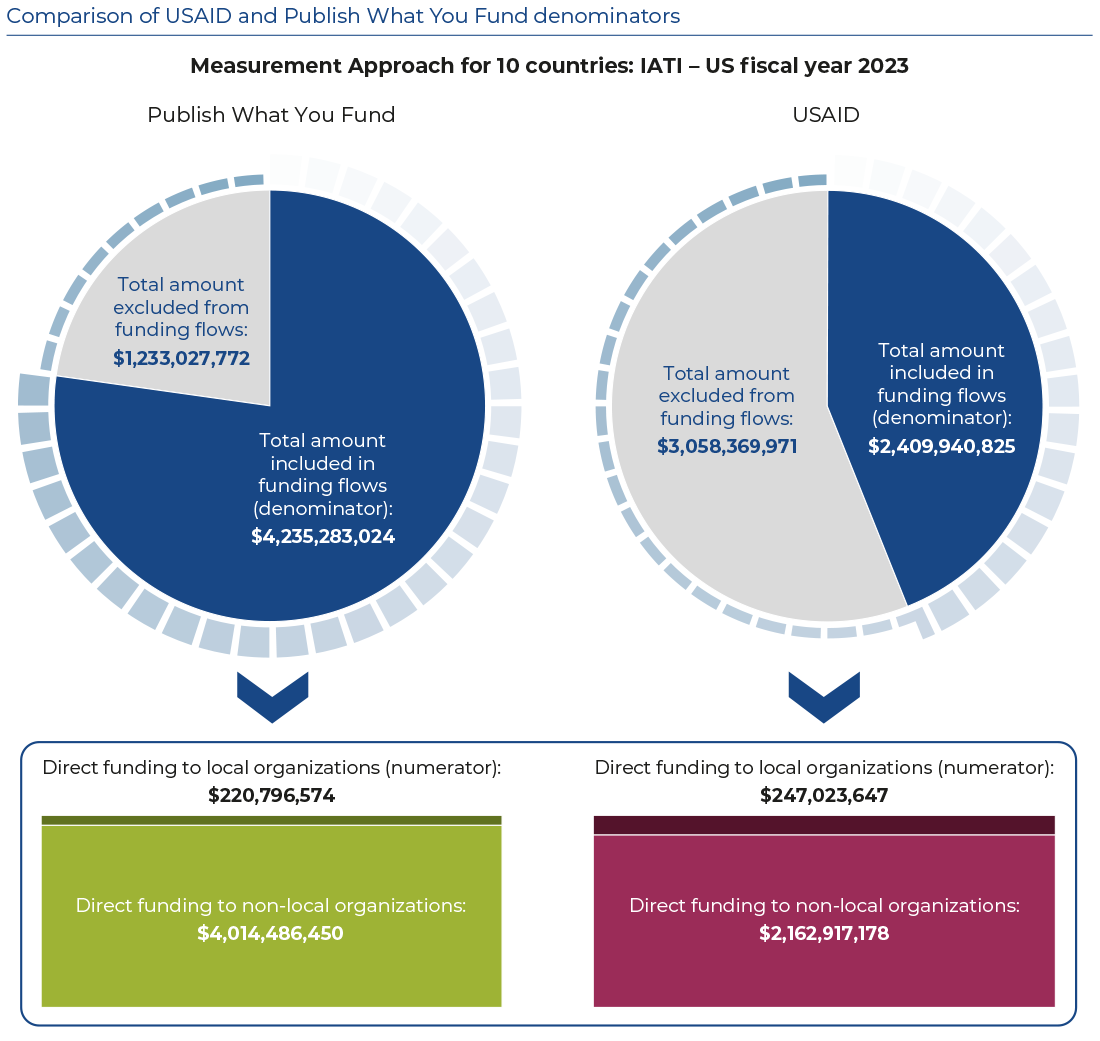USAID’s measurement approach is undermining its progress on localization and its goal to diversify its local partner base
The US Agency for International Development (USAID) has made a bold commitment to the localization agenda: it has set a target that 25% of its funding will go directly to local partners by 2025. We congratulate USAID for its ambitious goal and for showing leadership in this area. However, new Publish What You Fund analysis shows that how USAID defines and measures localization is actually undermining its progress and at odds with its aim to increase the diversity of local partners and amplify under-represented voices. It is allowing perverse incentives – such as affiliates of international organizations to be counted as local – and leaving significant funding opportunities – such as projectized funding that currently goes to UN agencies and multilaterals – untapped for local partners.

As we approach USAID’s deadline for reaching its 25% local funding goal, Publish What You Fund is calling on USAID to commit to reviewing its approach to measuring localization in 2025. We are highlighting two priorities:
- 25% of funding should mean 25% of ALL project funding. USAID excludes billions of dollars from consideration for its localization target – chiefly money going to UN projects. This accounted for $1.5 billion in the 10 countries we analyzed. These funds provide a huge opportunity for directing more funding to local organizations.

- USAID’s definition of “local” allows the local offices of international organizations to be counted as local. This sets perverse incentives and is at odds with USAID’s desire to expand the diversity of local actors and amplify local voices.
The analysis is contained in our Metrics Matter II report. Publish What You Fund has undertaken detailed research into USAID’s local partner funding goal to establish an independent, credible, and replicable measurement approach to track funding for local partners, as well as evaluate USAID’s progress in directly funding local organizations and assess the suitability of USAID’s measurement approach to achieve its stated goals.
Metrics Matter II builds on the methodology established in our 2023 Metrics Matter I report. We have examined USAID funding in 10 sample countries (Bangladesh, Ethiopia, Guatemala, Haiti, Jordan, Kenya, Liberia, Moldova, Nepal, and Zambia) and compared our own measurement approach with the approach adopted by USAID to determine the difference in funding amounts currently directed to local partners and the amounts that would be needed to reach the 25% target.
The outcome of our analysis illustrates how differences in measurement approaches change the funding amounts USAID will need to provide local organizations to reach the 25% target. It also shows that USAID is a long way from meeting its 25% goal.
By analyzing funding in US FY 2023 and applying both measurement approaches we found for our 10 countries:
- USAID’s approach nearly doubles the percentage counted as going directly to local organizations – 10.3% compared to 5.2% using our approach. Both approaches show a drop in the proportion of funding directed to local partners compared to US FY 2022.
- USAID’s denominator (the 25% of what) reduces the envelope of funding considered for the 25% target from $4.2bn to $2.4bn when compared to a denominator which provides more opportunities for local organizations.
- Under USAID’s approach, an estimated $247m went directly to local partners. To reach 25%, USAID would have needed to channel an additional $355m to local organizations in our 10 countries.
- Using Publish What You Fund’s approach, an estimated $221m went to local partners. To reach 25%, USAID would have needed to fund an additional $840m directly to local organizations in our 10 countries.

